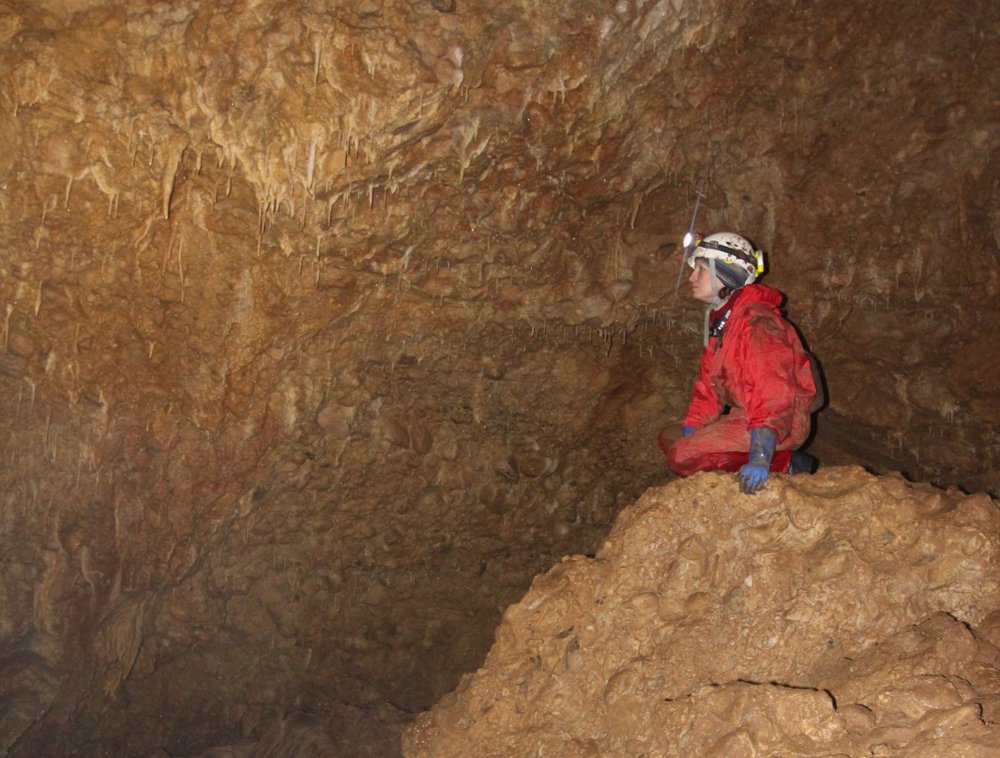A project by young scientists from RUDN University will help preserve rock art using silver nanoparticles

Every year, RUDN University hosts a competition of student scientific works “Common Start: Let’s Do Science Together.” The university provides scholarships for projects of young scientists and student associations. All developments are practice-oriented and have the potential for further commercialization.
One of the 9 winners this year was developed by a project group from the Institute of Ecology. They are researching ways to prevent biofouling on the surface of architectural monuments, excursion caves and prehistoric rock paintings based on polymers and silver nanoparticles.
The research group included:
- The scientific director of the project is Anton Fedorov, graduate student, junior researcher at the Department of Environmental Safety and Product Quality Management of the Institute of Ecology of the RUDN University.
- Ekaterina Krivosheeva (“Recycling of production and consumption waste”, master’s degree, second year).
- Anastasia Kovaleva (“Recycling of production and consumption waste”, master’s degree, second year).
What is the relevance of your research?
“We are dealing with the problem of preserving cultural heritage - this is Paleolithic and Neolithic rock art. Our research is designed to preserve historical objects from inevitable extinction. Rock painting allows you to better understand the culture and traditions of ancient people. The development of scientific methods of analysis allows us to turn to rock paintings again and again and learn new facts about the past,” Ekaterina Krivosheeva.
What problem are you solving?
“The stable microclimate of the caves and the absence of precipitation favor the preservation of mineral dyes. However, there are two main risk factors.
The first factor is the installation of additional lighting in excursion caves and even just a visit to the cave by excursionists, changing the microclimate and promoting the growth of unwanted microorganisms. In addition to aesthetic problems and the hiding of patterns under a layer of microorganisms, the destruction of the mineral pigment and the outer layer of the rock occurs under the influence of waste products of microorganisms. If this situation is ignored for a long time, images may be completely lost.
The second problem is the presence of variable water flows in the cave, which can contribute to the formation of calcite deposits, burying the rock art under the thickness of sediments,” Anastasia Kovaleva.
What solution do you propose?
“The drug we developed solves both problems described. Silver nanoparticles exhibit an antibiotic effect on microorganisms, the polymer matrix protects the surface from the formation of calcite deposits and will provide long-term protection in one application. It is especially worth noting that the drug does not change the appearance of the drawings in any way and is easy to use - it is sprayed. We are preparing to obtain a patent for the development. In the future, we also plan to work with enzyme-based drugs and test the effect of nanoparticles based on metals and oxides, more typical for cave ecosystems,” Anton Fedorov, scientific director of the project.
A total of 9 projects won the competition. Teams from the Faculty of Physics, Mathematics and Natural Sciences, the Institute of Ecology, the Higher School of Management, the Medical Institute, the Faculty of Philology and the Institute of Foreign Economic Security and Customs will receive scholarships.
Interviewed by Elena Balan
RUDN University summed up the results of the I International Student Competition in memory of Professor Pyotr Kucherenko. More than 100 applications were submitted from students of the Law Institute.
The research of young scientists of RUDN Medical Institute is the best among the oral presentations in the section “Molecular Medicine” at the XX International (XXIX All-Russian) Pirogov Scientific Medical Conference of Students and Young Scientists.
Students of the RUDN University Medical Institute participated in the scientific and educational program “Community of Young Scientists” of the Hadassah Medical Moscow Clinic.
RUDN University summed up the results of the I International Student Competition in memory of Professor Pyotr Kucherenko. More than 100 applications were submitted from students of the Law Institute.
The research of young scientists of RUDN Medical Institute is the best among the oral presentations in the section “Molecular Medicine” at the XX International (XXIX All-Russian) Pirogov Scientific Medical Conference of Students and Young Scientists.
Students of the RUDN University Medical Institute participated in the scientific and educational program “Community of Young Scientists” of the Hadassah Medical Moscow Clinic.